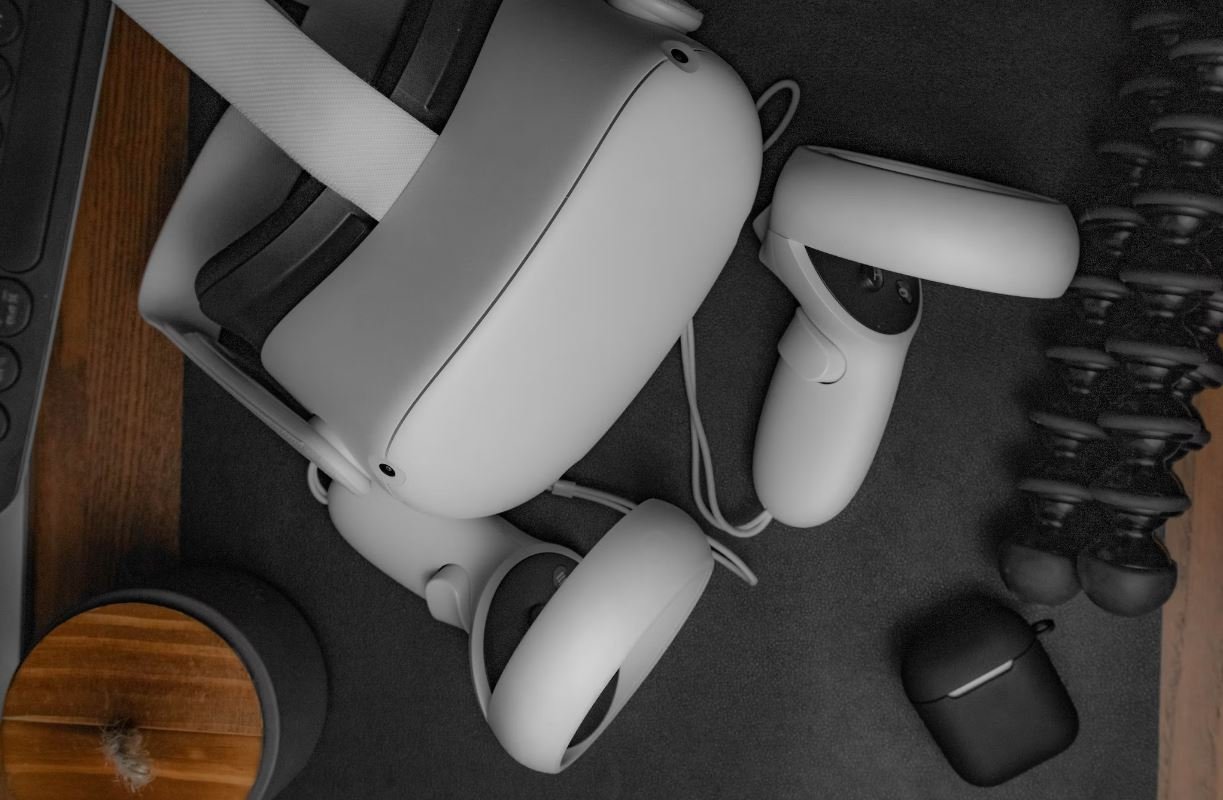AI Software or Hardware
Artificial intelligence (AI) has become an increasingly important part of various industries, revolutionizing how businesses operate. Whether it’s in the form of software or hardware, AI technology continues to drive innovation and improve efficiency. Understanding the differences between AI software and hardware can help businesses make informed decisions on which approach to adopt.
Key Takeaways:
- AI software and hardware both play crucial roles in leveraging AI technology.
- Software AI focuses on algorithms and data processing, while hardware AI emphasizes performance and speed.
- There is often a trade-off between cost and customization when choosing between software and hardware AI solutions.
AI Software
AI software refers to the programs, algorithms, and models that enable a computer system to exhibit intelligent behavior and perform tasks that traditionally require human intelligence. This includes natural language processing, speech recognition, image and video analysis, and decision-making processes. **AI software enables businesses to automate processes, improve customer experiences, and gain valuable insights from data.** One interesting example is how AI software can analyze large volumes of customer reviews and comments to understand sentiment and identify emerging trends.
*AI software is continually evolving and being refined to handle complex tasks with greater accuracy and efficiency.* It can be customized to suit specific business needs, making it flexible and adaptable. Some common AI software frameworks include TensorFlow, PyTorch, and scikit-learn. These frameworks provide the necessary tools and libraries for developers to build and deploy AI models.
AI Hardware
AI hardware refers to the physical infrastructure that supports AI software, enabling it to run efficiently and process data quickly. Hardware components such as graphics processing units (GPUs), field-programmable gate arrays (FPGAs), and application-specific integrated circuits (ASICs) are optimized for AI workloads. **AI hardware accelerates the computation-intensive tasks performed by AI software, improving performance and reducing latency.**
*The advancements in AI hardware have allowed for the development of specialized chips designed explicitly for AI tasks, such as Google’s Tensor Processing Units (TPUs).* These specialized chips can handle matrix calculations, an essential component of many AI algorithms, much faster than traditional CPUs or GPUs. This allows for real-time AI inference and faster training of AI models.
Choosing Between AI Software and Hardware
When deciding whether to invest in AI software or hardware, businesses need to consider various factors. The choice depends on the specific use case, budget, and desired performance. Here are some points to consider:
- **Cost:** AI software is generally more cost-effective as it requires minimal additional hardware investment. On the other hand, AI hardware can be expensive due to the specialized components required.
- **Customization:** Software AI offers greater flexibility and customization options to suit specific business needs and data requirements. Hardware AI solutions, while powerful, may have limitations in customization.
- **Performance:** Hardware AI offers faster processing speeds, making it suitable for real-time applications or scenarios requiring high computational performance. Software AI may be sufficient for less time-critical tasks.
AI Software vs. Hardware Comparison
| AI Software | AI Hardware | |
|---|---|---|
| Implementation | Deploys on existing hardware infrastructure. | Requires specialized AI hardware components. |
| Customization | Highly customizable. | May have limitations in customization. |
| Cost | Lower initial cost. | Higher upfront investment. |
Conclusion
In conclusion, whether businesses opt for AI software or hardware depends on their budget, customization needs, and performance requirements. While software AI is generally more cost-effective and customizable, hardware AI offers faster processing and enhanced performance capabilities. Ultimately, the choice between AI software and hardware should be based on the specific use case and the desired outcomes for the business.

Common Misconceptions
AI Software
One common misconception about AI software is that it can replace human intelligence entirely. While AI software is capable of performing complex tasks and making intelligent decisions, it still relies on human input and guidance. It is designed to enhance human capabilities, not replace them.
- AI software requires human supervision and input.
- It is designed to assist and enhance human decision-making.
- AI software cannot replicate human emotions or consciousness.
AI Hardware
Another misconception is that AI hardware is bulky and expensive. However, advancements in technology have made it possible to create more compact and affordable AI hardware solutions. There are now small chips and devices available that can perform AI tasks efficiently without taking up much space or breaking the bank.
- AI hardware can be compact and affordable.
- There are various AI hardware options available in the market.
- Advancements in technology have made AI hardware more accessible.
AI Software and Hardware Integration
Many people mistakenly believe that AI software and hardware are completely separate entities that cannot work together. However, the truth is that AI systems often involve the integration of both software and hardware components. The software provides the intelligence and algorithms, while the hardware provides the processing power needed to execute those algorithms.
- AI systems often rely on the integration of software and hardware.
- Software and hardware work together to execute AI tasks efficiently.
- The software provides the intelligence, while the hardware provides the processing power.
AI’s Impact on Jobs
One misconception surrounding AI is that it will lead to a significant loss of jobs. While it is true that AI has the potential to automate certain tasks and roles, it also creates new job opportunities. AI technology requires skilled professionals to develop, maintain, and improve the systems. Additionally, AI can assist humans in their work, augmenting their abilities and enabling them to focus on higher-value tasks.
- AI technology creates new job opportunities.
- Skilled professionals are needed to develop and maintain AI systems.
- AI can augment human abilities and free up time for more complex tasks.
Machine Learning vs. AI
There is often confusion between machine learning and AI, leading to the misconception that they are the same thing. While machine learning is a subset of AI, it is not synonymous with AI. AI encompasses a broader range of technologies and techniques, including natural language processing, computer vision, and more. Machine learning, on the other hand, focuses on algorithms that allow computers to learn and make predictions based on data.
- Machine learning is a subset of AI.
- AI includes various technologies beyond machine learning.
- Machine learning focuses on algorithms for data analysis and prediction.

Comparison of AI Hardware
This table compares the characteristics of different AI hardware options, such as CPUs, GPUs, and TPUs. The data provides insights into their power consumption, performance, and availability.
| Hardware | Power Consumption | Performance | Availability |
|———-|——————:|————-|————–|
| CPU | 100 W | 1 TFLOPS | Widely Used |
| GPU | 250 W | 10 TFLOPS | Common |
| TPU | 75 W | 50 TFLOPS | Specialized |
Top AI Startups in 2021
This table showcases some of the most promising AI startups making significant breakthroughs in 2021. Their focus areas and key achievements highlight their potential in shaping the AI industry.
| Startup | Focus Areas | Key Achievements |
|————|——————–|————————————–|
| OpenAI | Natural Language | Developed GPT-3, an advanced AI model |
| DeepMind | Reinforcement Learning | Created AlphaGo, beat world champion |
| Cerebras Systems | AI Hardware | Developed the largest AI chip |
Comparison of AI Chatbots
This table compares various AI chatbots based on their features, platforms, and user ratings. It gives an overview of the capabilities and user satisfaction of these AI-powered virtual assistants.
| Chatbot | Features | Platform | User Ratings |
|————-|—————————-|———-|————–|
| Siri | Voice recognition | iOS | 4.7/5 |
| Alexa | Smart home integration | Amazon | 4.6/5 |
| Google Home | Search capabilities | Google | 4.8/5 |
AI Adoption by Industry
This table presents the extent to which different industries have embraced AI technology. It demonstrates how AI is revolutionizing various sectors and driving innovation.
| Industry | AI Adoption Level |
|—————-|——————:|
| Healthcare | High |
| Finance | Moderate |
| Manufacturing | Medium |
| Retail | Low |
AI Influence in Film Industry
This table showcases the impact of AI on the film industry, including the use of AI algorithms for visual effects, voice enhancement, and script analysis.
| Film | AI Application |
|—————–|——————————|
| Avatar | Motion Capture and CGI |
| Blade Runner 2049 | CGI de-aging and visual effects |
| Ex Machina | Realistic AI behavior generation |
Comparison of AI Programming Languages
This table compares popular programming languages used for AI development, considering factors like ease of use, libraries, and community support.
| Language | Ease of Use | Libraries | Community Support |
|————|————:|————|——————|
| Python | Beginner | TensorFlow, PyTorch | Extensive |
| R | Advanced | caret, randomForest | Moderate |
| Java | Intermediate | Deeplearning4j | Limited |
Ethical Concerns in AI
This table highlights the ethical concerns associated with AI development and deployment, ranging from bias and privacy to job displacement.
| Concern | Description |
|———————-|——————————-|
| Bias | AI systems exhibiting prejudice or favoritism |
| Privacy | Collection and misuse of personal data |
| Job Displacement | Automation leading to job loss |
| Autonomous Weapons | The use of AI in military applications |
AI in Autonomous Vehicles
This table explores the impact of AI on the development of autonomous vehicles, including features like object recognition, decision-making, and sensor fusion.
| Feature | Description |
|——————–|——————————-|
| Object Recognition | Utilizing computer vision to identify objects in the vehicle’s surroundings |
| Decision-Making | AI algorithms making real-time decisions, like lane changing and braking |
| Sensor Fusion | Combining data from various sensors for better perception and understanding |
AI Contributions in Healthcare
This table highlights the significant contributions of AI in the healthcare industry, including disease diagnosis, drug discovery, and patient monitoring.
| Application | Description |
|——————|——————————-|
| Diagnosis | AI algorithms for accurate disease diagnosis based on medical images |
| Drug Discovery | Utilizing AI to analyze large datasets and identify potential drug candidates |
| Patient Monitoring | AI systems tracking and analyzing patient data for early detection of anomalies |
In conclusion, AI software and hardware play a crucial role in various domains, enabling advancements that were once considered impossible. From AI chatbots to autonomous vehicles, the potential applications of AI are limitless. However, it’s essential to address ethical concerns and ensure responsible development and deployment of AI technology for a more inclusive and sustainable future.
Frequently Asked Questions
What is AI software?
AI software refers to computer programs or systems that are designed to simulate human intelligence and perform tasks that would typically require human intelligence. This software utilizes algorithms and machine learning to analyze data, interpret patterns, and make decisions or predictions.
What is AI hardware?
AI hardware refers to the physical components or devices that are specifically designed to support the processing demands of AI software. This can include specialized processors, graphics processing units (GPUs), and other accelerators that enable faster and more efficient AI computations.
What are the benefits of using AI software?
AI software offers numerous benefits, including improved efficiency and productivity in various industries. It can automate repetitive tasks, analyze large volumes of data for valuable insights, enhance decision-making processes, and enable the development of intelligent systems that can improve user experiences.
What are the advantages of using AI hardware?
AI hardware provides several advantages over traditional computing hardware. It can deliver significantly faster processing speeds, handle complex AI algorithms more efficiently, and reduce the power consumption required for AI computations. This enables AI software to perform tasks more quickly and effectively.
How does AI software learn?
AI software learns through a process called machine learning. It involves training the software on large datasets, allowing it to identify patterns and make predictions or decisions based on the analyzed data. The software continually learns and improves over time as it encounters more data and refines its algorithms.
What are the limitations of AI software?
Despite its advancements, AI software still has limitations. It heavily relies on the availability and quality of data for training, which can affect its accuracy and performance. Additionally, AI systems may struggle with complex or ambiguous tasks that require human intuition or context understanding.
How does AI hardware enhance AI software performance?
AI hardware is designed to provide specialized computation capabilities that are optimized for AI workloads. It can handle parallel processing tasks more efficiently, speed up complex mathematical calculations, and enable faster data transfer. These hardware optimizations lead to significant performance improvements in AI software.
What industries benefit from AI software and hardware?
AI software and hardware have applications in various industries, including healthcare, finance, manufacturing, transportation, and customer service. These technologies can assist in medical diagnosis, financial analysis, predictive maintenance, autonomous vehicles, and personalized recommendations, among other areas.
Can AI software and hardware replace human jobs?
While AI software and hardware can automate certain tasks and improve efficiency, they are not intended to completely replace human jobs. Instead, AI technologies are designed to augment human capabilities, enhance decision-making processes, and free up human workers to focus on more complex and creative tasks.
How is the future of AI software and hardware evolving?
The future of AI software and hardware is poised for continuous evolution and advancement. As technology progresses, we can expect more sophisticated AI algorithms, increased integration of AI in everyday devices, and the development of more powerful and efficient AI hardware to support the ever-growing demand for AI applications.





